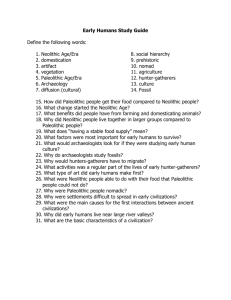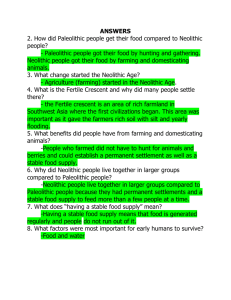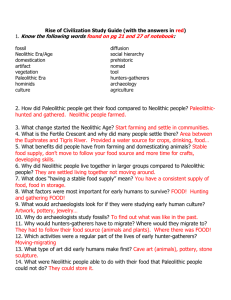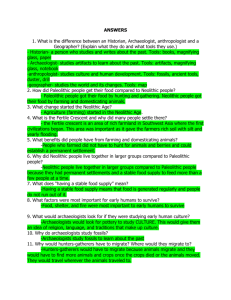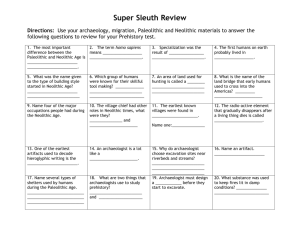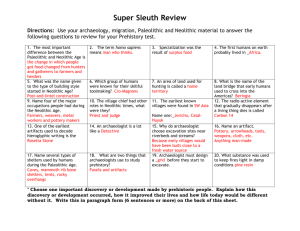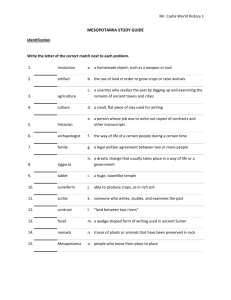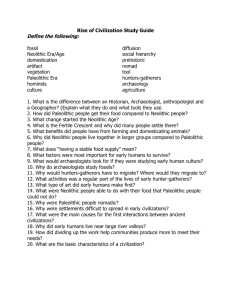File
advertisement
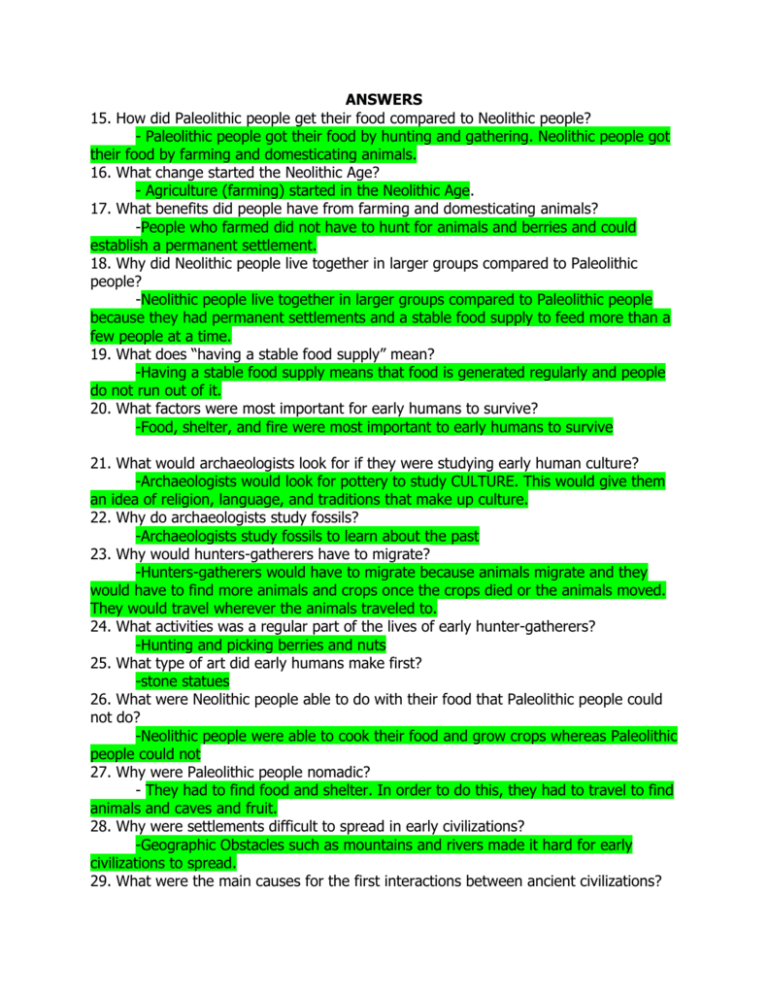
ANSWERS 15. How did Paleolithic people get their food compared to Neolithic people? - Paleolithic people got their food by hunting and gathering. Neolithic people got their food by farming and domesticating animals. 16. What change started the Neolithic Age? - Agriculture (farming) started in the Neolithic Age. 17. What benefits did people have from farming and domesticating animals? -People who farmed did not have to hunt for animals and berries and could establish a permanent settlement. 18. Why did Neolithic people live together in larger groups compared to Paleolithic people? -Neolithic people live together in larger groups compared to Paleolithic people because they had permanent settlements and a stable food supply to feed more than a few people at a time. 19. What does “having a stable food supply” mean? -Having a stable food supply means that food is generated regularly and people do not run out of it. 20. What factors were most important for early humans to survive? -Food, shelter, and fire were most important to early humans to survive 21. What would archaeologists look for if they were studying early human culture? -Archaeologists would look for pottery to study CULTURE. This would give them an idea of religion, language, and traditions that make up culture. 22. Why do archaeologists study fossils? -Archaeologists study fossils to learn about the past 23. Why would hunters-gatherers have to migrate? -Hunters-gatherers would have to migrate because animals migrate and they would have to find more animals and crops once the crops died or the animals moved. They would travel wherever the animals traveled to. 24. What activities was a regular part of the lives of early hunter-gatherers? -Hunting and picking berries and nuts 25. What type of art did early humans make first? -stone statues 26. What were Neolithic people able to do with their food that Paleolithic people could not do? -Neolithic people were able to cook their food and grow crops whereas Paleolithic people could not 27. Why were Paleolithic people nomadic? - They had to find food and shelter. In order to do this, they had to travel to find animals and caves and fruit. 28. Why were settlements difficult to spread in early civilizations? -Geographic Obstacles such as mountains and rivers made it hard for early civilizations to spread. 29. What were the main causes for the first interactions between ancient civilizations? -Trading and warfare were the main interactions between ancient civilizations. 30. Why did early humans live near large river valleys? -River valleys provided humans with rich, fertile soil to help grow crops. This was also the area where animals would retreat to for food and water. The rivers also help with trade. 31. What are the basic characteristics of a civilization? -The basic characteristics of a civilization are surplus food supply, division of labor (specialized skills), and social hierarchy.
